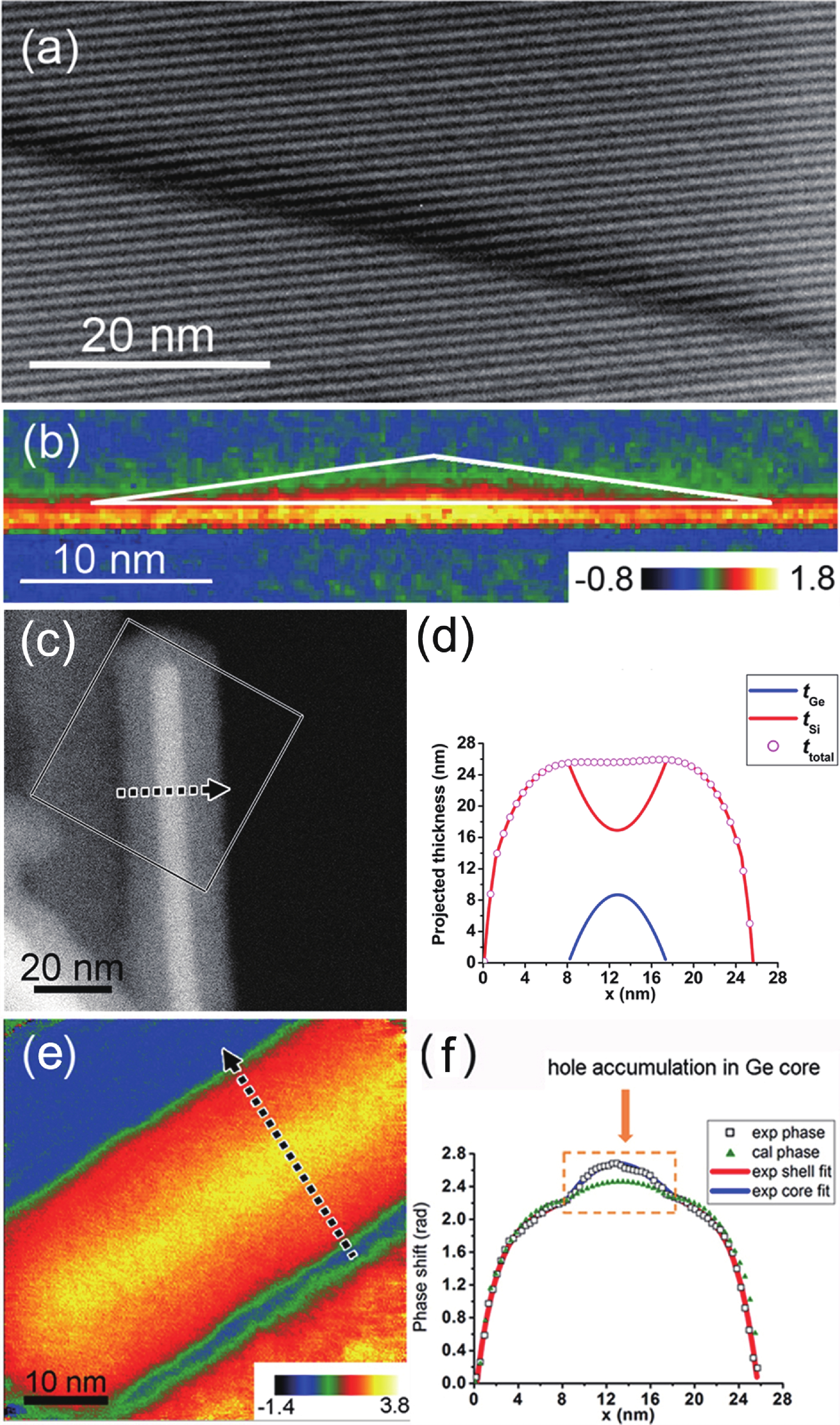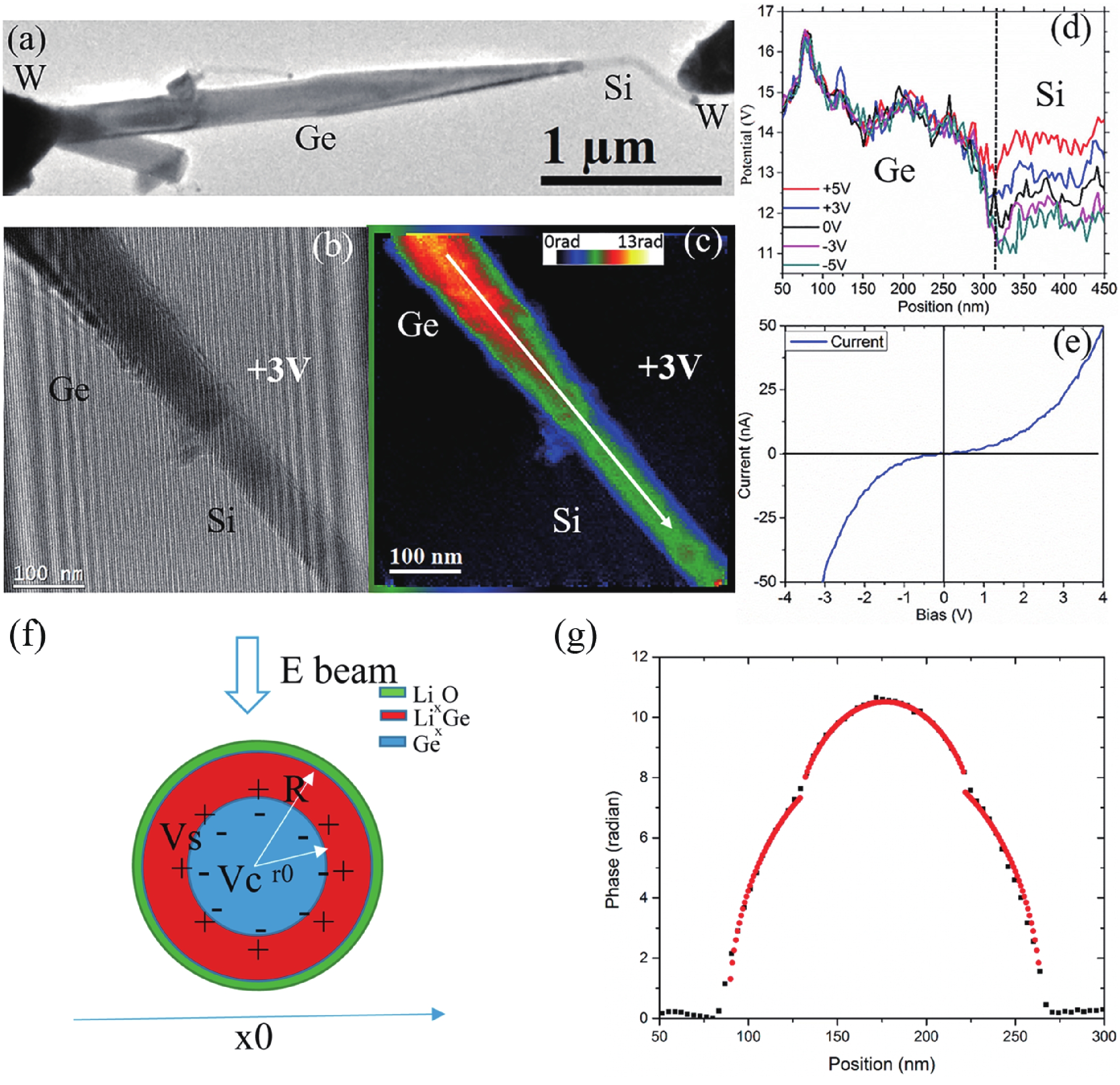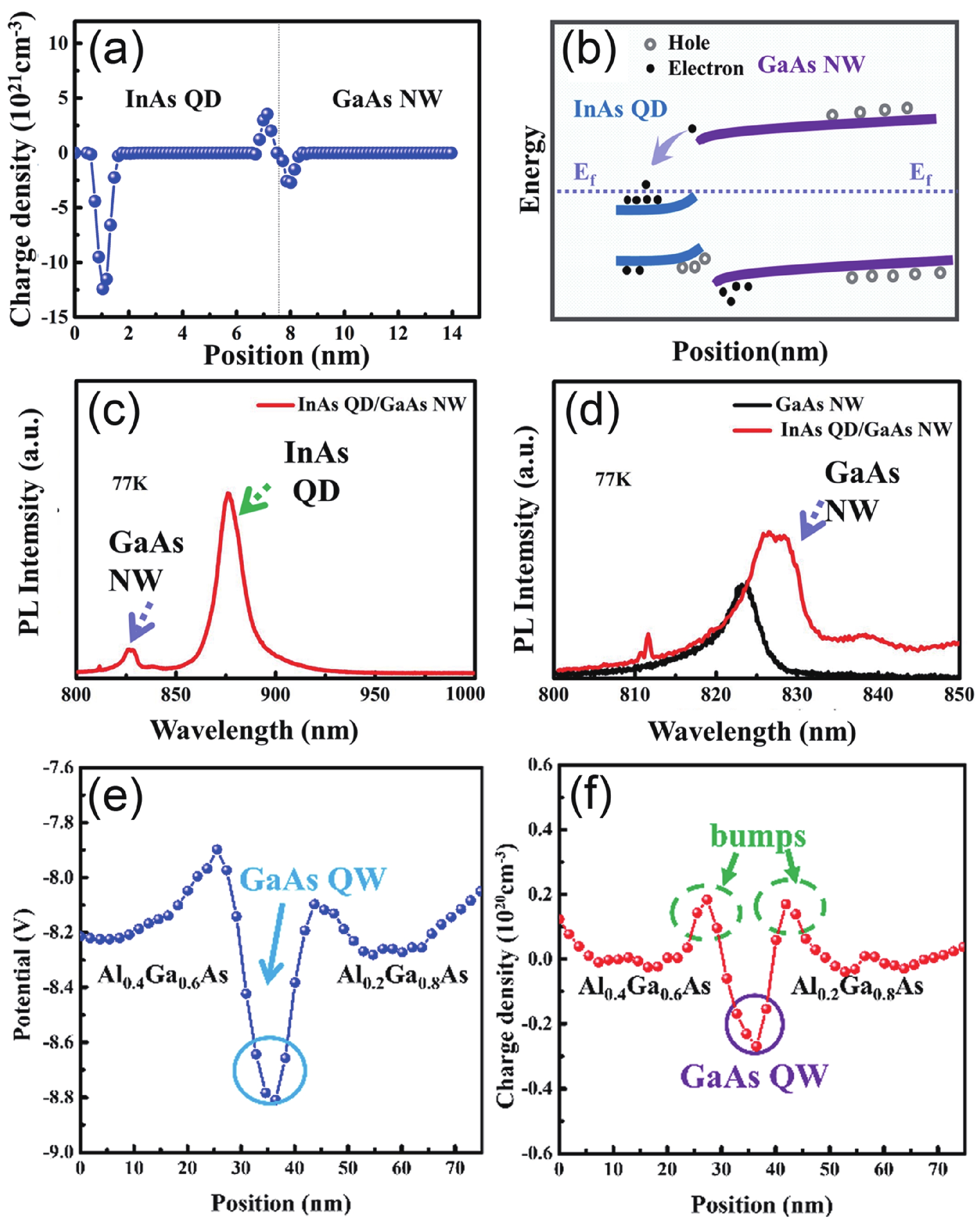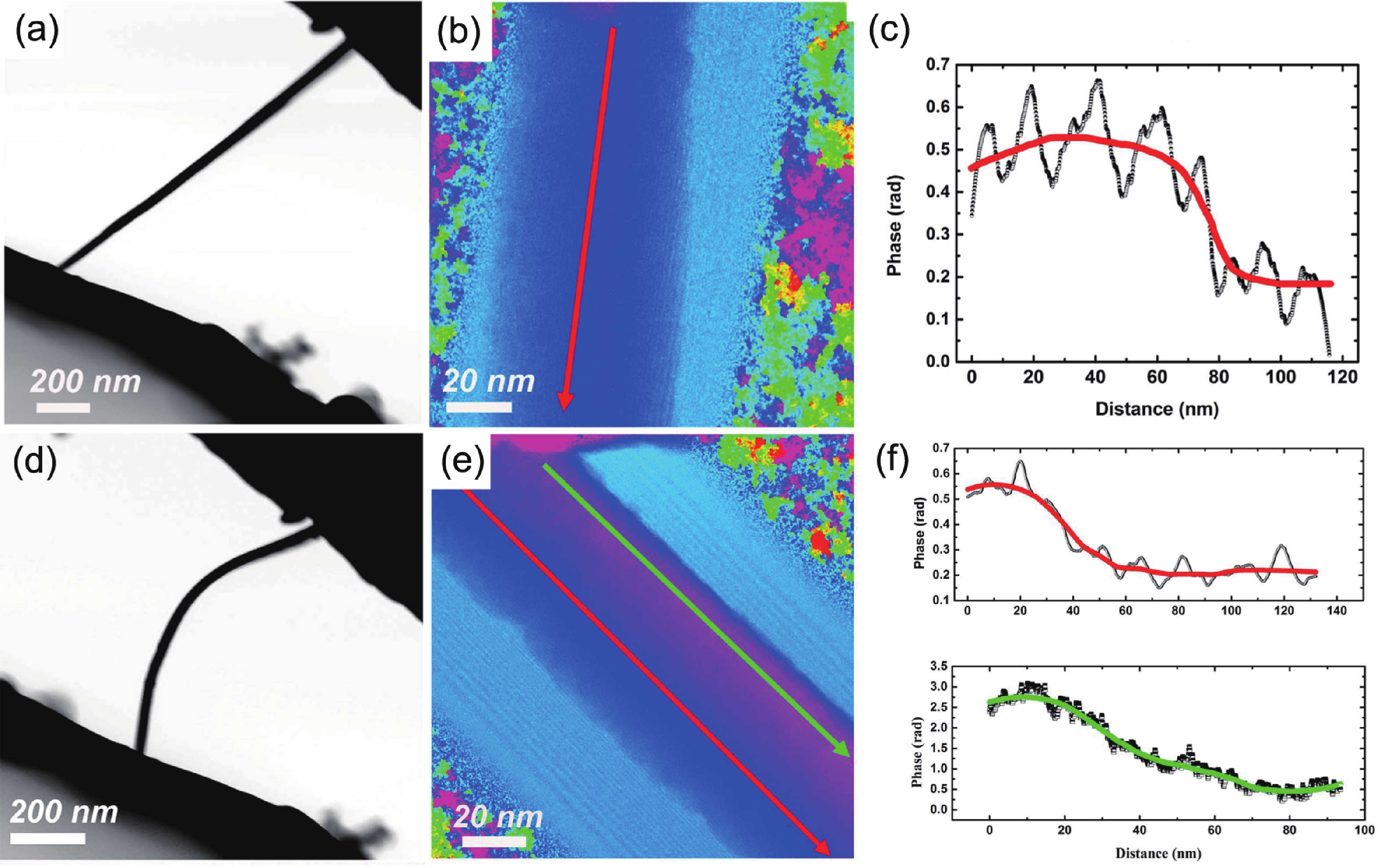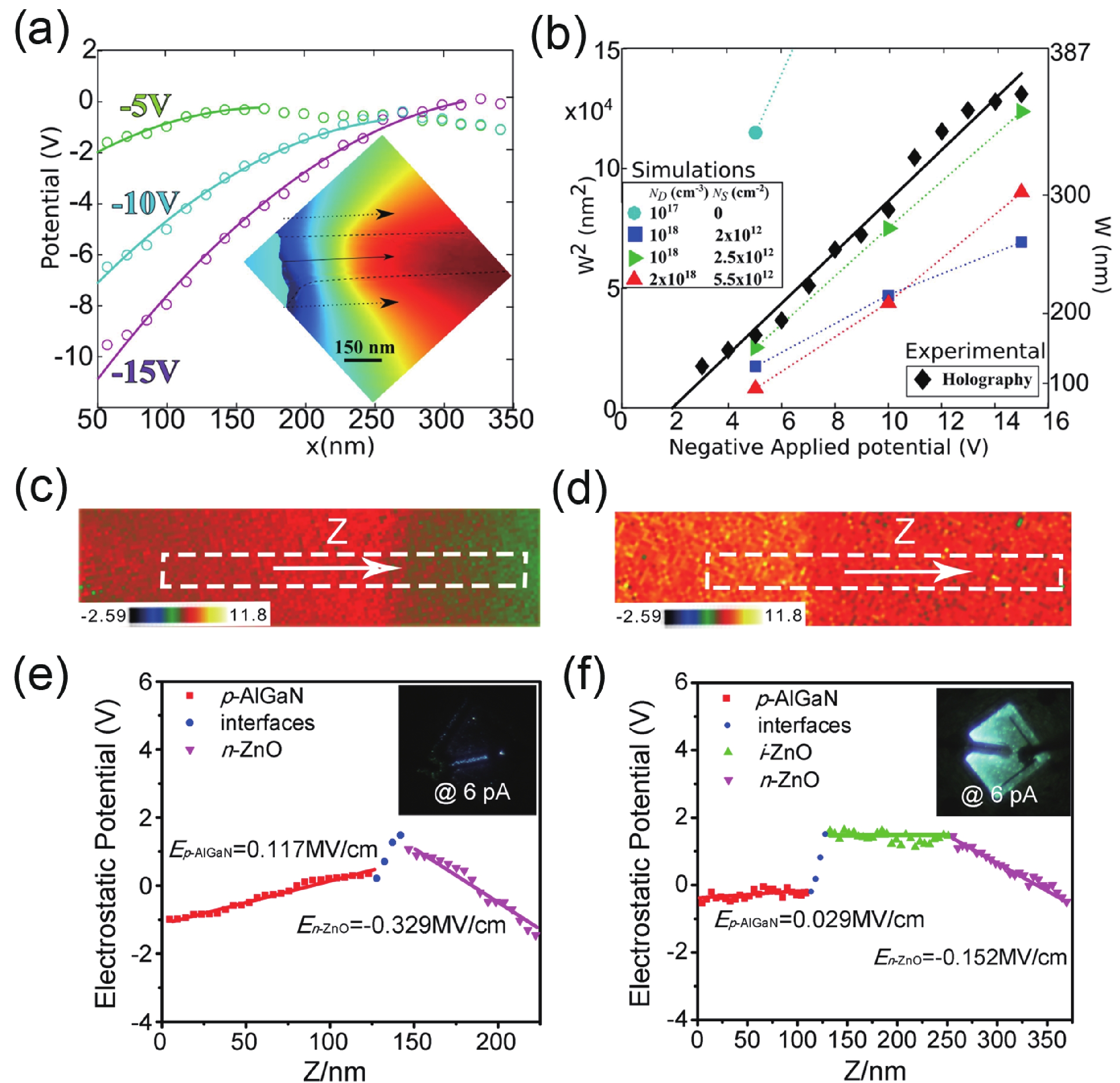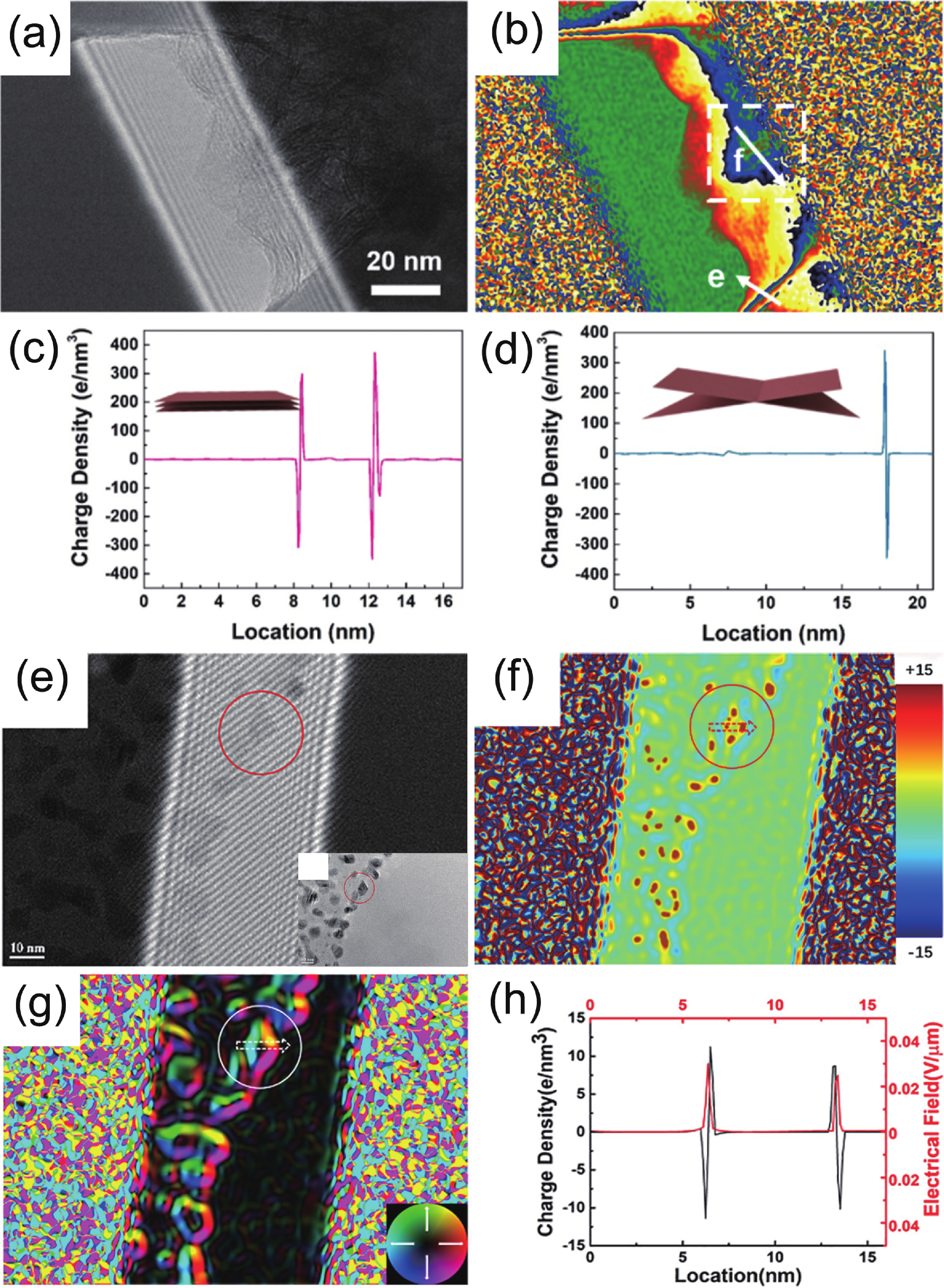| Citation: |
Luying Li, Yongfa Cheng, Zunyu Liu, Shuwen Yan, Li Li, Jianbo Wang, Lei Zhang, Yihua Gao. Study of structure-property relationship of semiconductor nanomaterials by off-axis electron holography[J]. Journal of Semiconductors, 2022, 43(4): 041103. doi: 10.1088/1674-4926/43/4/041103
****
L Y Li, Y F Cheng, Z Y Liu, S W Yan, L Li, J B Wang, L Zhang, Y H Gao. Study of structure-property relationship of semiconductor nanomaterials by off-axis electron holography[J]. J. Semicond, 2022, 43(4): 041103. doi: 10.1088/1674-4926/43/4/041103
|
Study of structure-property relationship of semiconductor nanomaterials by off-axis electron holography
DOI: 10.1088/1674-4926/43/4/041103
More Information
-
Abstract
As the scaling down of semiconductor devices, it would be necessary to discover the structure-property relationship of semiconductor nanomaterials at nanometer scale. In this review, the quantitative characterization technique off-axis electron holography is introduced in details, followed by its applications in various semiconductor nanomaterials including group IV, compound and two-dimensional semiconductor nanostructures in static states as well as under various stimuli. The advantages and disadvantages of off-axis electron holography in material analysis are discussed, the challenges facing in-situ electron holographic study of semiconductor devices at working conditions are presented, and all the possible influencing factors need to be considered to achieve the final goal of fulfilling quantitative characterization of the structure-property relationship of semiconductor devices at their working conditions. -
References
[1] Waldrop M M. The chips are down for Moore's law. Nature, 2016, 530, 144 doi: 10.1038/530144a[2] Li L, Gan Z, McCartney M R, et al. Atomic configurations at InAs partial dislocation cores associated with Z-shape faulted dipoles. Sci Rep, 2013, 3, 3229 doi: 10.1038/srep03229[3] Li L, Tu F, Jin L, et al. Polarity continuation and frustration in ZnSe nanospirals. Sci Rep, 2014, 4, 7447 doi: 10.1038/srep07447[4] Smith D J. Atomic-resolution structure imaging of defects and interfaces in compound semiconductors. Prog Cryst Growth Charact Mater, 2020, 66, 100498 doi: 10.1016/j.pcrysgrow.2020.100498[5] Bragg W L. Microscopy by reconstructed wave-fronts. Nature, 1950, 166, 399 doi: 10.1038/166399b0[6] Crewe A V, Isaacson M, Johnson D. A simple scanning electron microscope. Rev Sci Instrum, 1969, 40, 241 doi: 10.1063/1.1683910[7] Cowley J M. Twenty forms of electron holography. Ultramicroscopy, 1992, 41, 335 doi: 10.1016/0304-3991(92)90213-4[8] Li L Y, Hu X K, Gao Y H. Electron holographic study of semiconductor light-emitting diodes. Small, 2018, 14, 1701996 doi: 10.1002/smll.201701996[9] Lichte H, Formanek P, Lenk A, et al. Electron holography: Applications to materials questions. Annu Rev Mater Res, 2007, 37, 539 doi: 10.1146/annurev.matsci.37.052506.084232[10] McCartney M R, Gajdardziska-Josifovska M. Absolute measurement of normalized thickness, t/λ i, from off-axis electron holography. Ultramicroscopy, 1994, 53, 283 doi: 10.1016/0304-3991(94)90040-X[11] Gribelyuk M A, McCartney M R, Li J, et al. Mapping of electrostatic potential in deep submicron CMOS devices by electron holography. Phys Rev Lett, 2002, 89, 025502 doi: 10.1103/PhysRevLett.89.025502[12] den Hertog M I, Schmid H, Cooper D, et al. Mapping active dopants in single silicon nanowires using off-axis electron holography. Nano Lett, 2009, 9, 3837 doi: 10.1021/nl902024h[13] Li L Y, Smith D J, Dailey E, et al. Observation of hole accumulation in Ge/Si core/shell nanowires using off-axis electron holography. Nano Lett, 2011, 11, 493 doi: 10.1021/nl1033107[14] Gan Z F, Gu M, Tang J S, et al. Direct mapping of charge distribution during lithiation of Ge nanowires using off-axis electron holography. Nano Lett, 2016, 16, 3748 doi: 10.1021/acs.nanolett.6b01099[15] Zhou L, Smith D J, McCartney M R, et al. Measurement of electric field across individual wurtzite GaN quantum dots using electron holography. Appl Phys Lett, 2011, 99, 101905 doi: 10.1063/1.3636109[16] McCartney M R, Dunin-Borkowski R E, Smith D J. Quantitative measurement of nanoscale electrostatic potentials and charges using off-axis electron holography: Developments and opportunities. Ultramicroscopy, 2019, 203, 105 doi: 10.1016/j.ultramic.2019.01.008[17] Kern F, Linck M, Wolf D, et al. Autocorrected off-axis holography of two-dimensional materials. Phys Rev Res, 2020, 2, 043360 doi: 10.1103/PhysRevResearch.2.043360[18] Li L Y, Ketharanathan S, Drucker J, et al. Study of hole accumulation in individual germanium quantum dots in p-type silicon by off-axis electron holography. Appl Phys Lett, 2009, 94, 232108 doi: 10.1063/1.3154524[19] Gan Z F, Perea D E, Yoo J, et al. Characterization of electrical properties in axial Si-Ge nanowire heterojunctions using off-axis electron holography and atom-probe tomography. J Appl Phys, 2016, 120, 104301 doi: 10.1063/1.4962380[20] Cheng F, Li B, Li L Y, et al. Study of the polarization effect in InAs quantum dots/GaAs nanowires. J Phys Chem C, 2019, 123, 4228 doi: 10.1021/acs.jpcc.8b11425[21] Li C, Cheng Y F, Li B, et al. Study of charge distributions and electrical properties in GaAs/AlGaAs single quantum well/nanowire heterostructures. J Phys Chem C, 2019, 123, 26888 doi: 10.1021/acs.jpcc.9b06371[22] Qi T Y, Cheng Y F, Cheng F, et al. Study of nanometer-scale structures and electrostatic properties of InAs quantum dots decorating GaAs/AlAs core/shell nanowires. Nanotechnology, 2020, 31, 245701 doi: 10.1088/1361-6528/ab767e[23] den Hertog M, Songmuang R, Monroy E. Polarization fields in GaN/AlN nanowire heterostructures studied by off-axis holography. J Phys: Conf Ser, 2013, 471, 012019 doi: 10.1088/1742-6596/471/1/012019[24] Chen X, Wang Y G, Guo J, et al. In-situ potential mapping of space charge layer in GaN nanowires under electrical field by off-axis electron holography. Prog Nat Sci Mater Int, 2016, 26, 163 doi: 10.1016/j.pnsc.2016.03.009[25] Chen X, Wang Y G, Jian J K, et al. Effect of strain on space charge layer in GaN nanowires investigated by in situ off-axis electron holography. Prog Nat Sci Mater Int, 2017, 27, 186 doi: 10.1016/j.pnsc.2017.02.003[26] Chen X, Wang Y G, Jian J K, et al. Controlling charges distribution at the surface of a single GaN nanowire by in situ strain. Prog Nat Sci Mater Int, 2017, 27, 430 doi: 10.1016/j.pnsc.2017.06.007[27] den Hertog M, Donatini F, McLeod R, et al. In situ biasing and off-axis electron holography of a ZnO nanowire. Nanotechnology, 2018, 29, 025710 doi: 10.1088/1361-6528/aa923c[28] Jiang F, Chen J W, Bi H, et al. The underlying micro-mechanism of performance enhancement of non-polar n-ZnO/p-AlGaN ultraviolet light emitting diode with i-ZnO inserted layer. Appl Phys Lett, 2018, 112, 033505 doi: 10.1063/1.5010594[29] Li X, Wen C Y, Yang L T, et al. Enhanced visualizing charge distribution of 2D/2D MXene/MoS2 heterostructure for excellent microwave absorption performance. J Alloys Compd, 2021, 869, 159365 doi: 10.1016/j.jallcom.2021.159365[30] Xing L S, Li X, Wu Z C, et al. 3D hierarchical local heterojunction of MoS2/FeS2 for enhanced microwave absorption. Chem Eng J, 2020, 379, 122241 doi: 10.1016/j.cej.2019.122241[31] Kawasaki T, Takahashi Y, Tanigaki T. Holography: application to high-resolution imaging. Microscopy, 2020, 70, 39 doi: 10.1093/jmicro/dfaa050[32] Wolf D, Lubk A, Prete P, et al. 3D mapping of nanoscale electric potentials in semiconductor structures using electron-holographic tomography. J Phys D, 2016, 49, 364004 doi: 10.1088/0022-3727/49/36/364004[33] Liu L Z Y, McAleese C, Sridhara Rao D V, et al. Electron holography of an in situ biased GaN-based LED. Phys Status Solidi C, 2012, 9, 704 doi: 10.1002/pssc.201100486[34] Yazdi S, Kasama T, Beleggia M, et al. Towards quantitative electrostatic potential mapping of working semiconductor devices using off-axis electron holography. Ultramicroscopy, 2015, 152, 10 doi: 10.1016/j.ultramic.2014.12.012 -
Proportional views





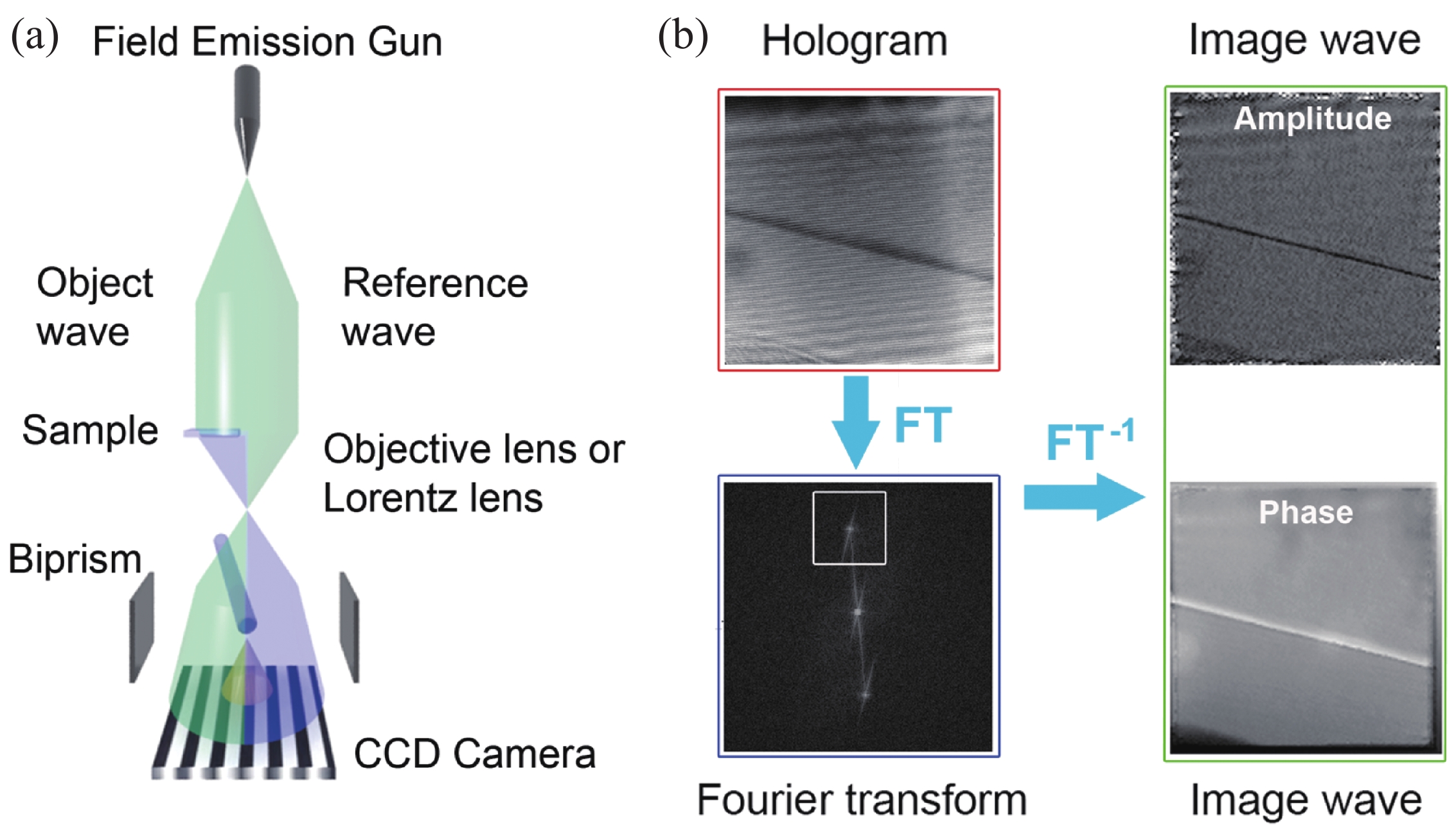
 DownLoad:
DownLoad:
